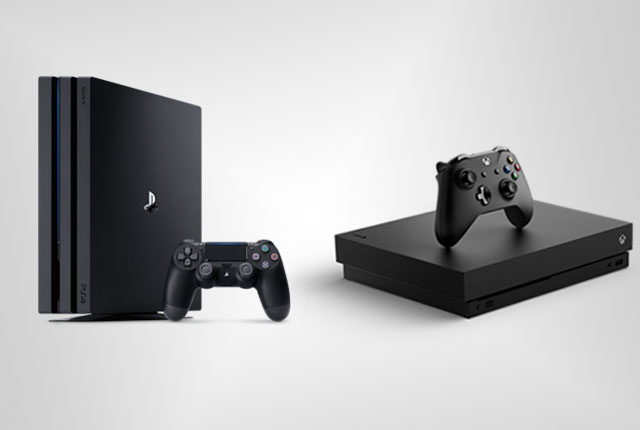Growing up, were you a Nintendo kid or a Sega kid? While the answer to that question rested partially on which console your parents bought you during those formative years, your preference was largely determined by the kind games you wanted to play. Back in the early 90s at the height of the original console wars, the SNES and Sega Genesis each had their own portfolio of exclusive titles that drew different kinds of audiences.
In 1991, after Sega’s three fledgling years with the Genesis, the company released Sonic the Hedgehog. Considered one of gaming’s most important killer apps, Sonic’s exclusivity on the Sega platforms gave the company a foothold to surge in popularity during the early 90s.

In those days, exclusive titles drove the industry. Decisions about console preferences were made on the backs of exclusive titles. Players sought out specific hardware in order to get the games that they wanted. Today, the word “exclusive” gets tossed around so much, with so many different modifiers, that it has lost its meaning almost entirely. So much so, that we need a glossary just to understand the various ways in which companies use the word.
- Exclusive – The game will exist in perpetuity on one platform. Example: Uncharted 4
- Console Exclusive – The game will release on PC, but for the life of the game it will be limited to the console that it launched on. Example: Nier: Automata
- Console Launch Exclusive – The game will release on PC and one specific console. However, the game will launch on other platforms at a later date. Example: Rise of the Tomb Raider
- Exclusive Content – The game will release day and date on multiple platforms, but DLC and in-game content will only be available on a single platform. Example: Destiny
- Marketing Exclusivity – While the game will have a day and date release on multiple platforms, all marketing materials show one platform’s logo. Example: Madden
- Pre-Order Exclusive – Some piece of in-game content — be it a skin, map, or weapon — is tied to whether or not a player pre-orders the game. Example: The Wenja Pack for Far Cry Primal
- Retail Exclusive – Generally applies to DLC and other in-game content, but limits said content to those who purchase the game through a specific retailer. Example: Batman: Arkham Knight
- Timed Exclusive – See “console launch exclusive.” Timed exclusive has the exact same definition, but lacks that certain marketing spin.
No company has been more guilty, in recent years, of playing fast and loose with the word exclusive than Microsoft. During Gamescom 2014, Microsoft announced Rise of the Tomb Raider as an Xbox exclusive title “for Holiday 2015.” The unclear messaging led to a lot of confusion among gamers and outlets trying to report news of the announcement. At the end of the day, the game was a timed exclusive that made its way to PS4 a year later.

In March 2016, the company pushed to unify the Xbox and Windows 10 platform through Universal Windows Applications (UWAs). This meant that the Xbox took on a more PC vibe in terms of UI, and Windows 10 PCs could more easily interface with the Xbox. At E3 that same year, Xbox launched the Play Anywhere initiative which gave users who purchased a game on the Xbox One the ability to play the game on PC as well. The program effectively ended true Xbox exclusivity as every subsequent Microsoft published title has launched on Windows 10, as well.
Now, in order to reclaim some of the marketing oomph the word “exclusive” provides, Microsoft has tacked on a number of qualifiers to the word. At E3 2017, Xbox featured 15 “exclusive” titles during their press briefings. Of the 15, eight were console exclusives also releasing on Windows 10, and seven were announced as “console launch exclusives,” meaning they will eventually come to PS4.
But Microsoft does not solely own the blame for having shrouded the word in mystery. While Sony maintains a far more robust exclusive library than their counterpart, they have made a regular habit of leveraging their relationships with third parties to make specific in-game items exclusive to their platform, most notably with Activision properties. Take the original Destiny for example. Sony did not just have exclusive marketing rights for the game. Bungie also released exclusive content including raids, weapons, multiplayer maps, and gear that took up to a year to release on Xbox One, if it ever came at all.

Sony also caught flack for striking a deal with Capcom to make Street Fighter V exclusive for the PS4. According to Capcom, the deal made certain content and development possible for the game. “We’re not talking about how we’re handling post-launch content, but I can say the relationship with Sony does open doors for things we haven’t been able to do in the past,” a Capcom representative told GameSpot. “The relationship serves a gameplay and development purpose, and not just a marketing value.”
For Sony and Microsoft alike, these third-party deals represent nothing but marketing value, and often at the cost of consumers. They benefit from both the true exclusivity of content and also from the perceived exclusivity of the marketing. In 2017, through the whirlwind of announcements and marketing spin, the industry has lost the meaning of exclusives and turned it into a word used to confuse consumers. A false differentiator that, at the end of the day, could mean just about anything in terms of what platforms the game will be available on.













Updated: Aug 29, 2017 01:25 pm